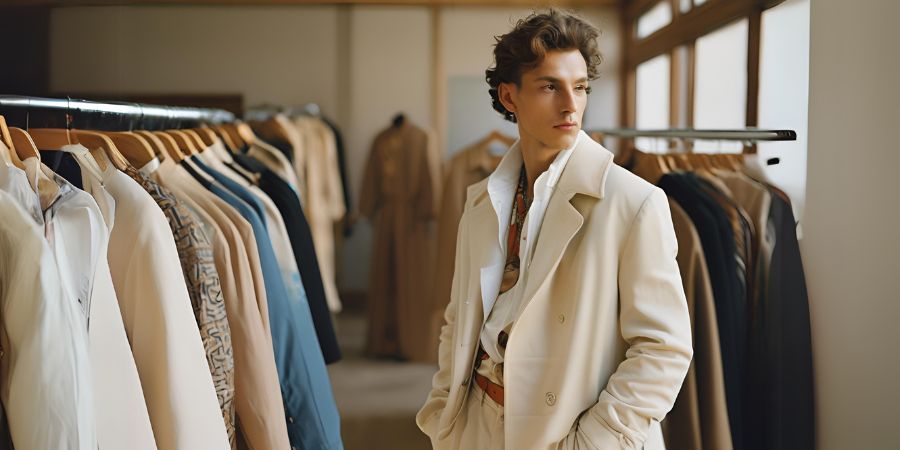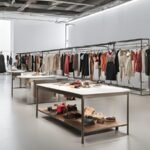Fashion designers have always been admired for their creativity and ability to set trends. Male fashion designers, in particular, are known for their unique sense of style, which often reflects their personality and the artistic vision behind their work. But how do they actually look? This article explores the various factors that define the appearance of male fashion designers, from their clothing choices to their grooming habits and overall persona.
Understanding the Appearance of Male Fashion Designers
The appearance of male fashion designers is often a blend of personal expression and industry standards. While there is no single “look” that defines all male designers, there are common traits that make them stand out in a crowd.
Personal Style: The Signature Look
Every fashion designer cultivates a personal style that reflects their brand or creative ethos. Male designers are no exception, often using their outfits as a canvas to showcase their artistry.
- Avant-Garde Elegance: Many designers opt for bold, experimental clothing that pushes boundaries, such as asymmetrical cuts, layered textures, or unconventional materials.
- Minimalist Sophistication: Some prefer a clean, streamlined look, often wearing neutral colors and timeless pieces.
- Streetwear Influence: A younger generation of male designers gravitates towards urban, edgy styles like oversized hoodies, sneakers, and graphic prints.
Grooming and Physical Presentation
The grooming habits of male fashion designers are another significant aspect of their overall appearance. They are often meticulous about presenting themselves in a polished and fashionable way.
1. Hair and Facial Hair
- Hairstyles: From slicked-back hair to modern fades and long, flowing locks, male designers often choose hairstyles that complement their unique look.
- Beards and Mustaches: Facial hair is another medium for self-expression. Some designers sport well-groomed beards or distinctive mustaches, adding a touch of sophistication to their appearance.
2. Skin Care
- Many male fashion designers prioritize skincare to maintain a healthy and radiant look, especially when they frequently appear at public events or on camera.
Clothing Choices That Define Their Look
Male fashion designers often use clothing to communicate their creative identity. Their wardrobes are typically well-curated and reflect their relationship with current trends or timeless aesthetics.
1. Designer Pieces
- Wearing Their Own Designs: Many male designers wear pieces from their collections to promote their work and align their personal look with their brand.
- Mixing High and Low Fashion: It’s common for designers to mix luxury items with casual pieces, showcasing a versatile understanding of fashion.
2. Accessorizing with Intent
Accessories are another area where male designers excel in creativity.
- Jewelry: Statement necklaces, rings, or bracelets often complete their outfits.
- Eyewear: Bold glasses or sunglasses are popular choices among designers to add a touch of intrigue to their appearance.
How Their Careers Shape Their Appearance
The demanding nature of the fashion industry influences how male designers present themselves. Their appearance often evolves to match their role within the industry.
1. Runway and Event Presence
When attending fashion shows or industry events, male designers typically dress to impress.
- Sophisticated Attire: Tailored suits or custom-designed ensembles are common for formal settings.
- Creative Statements: Bold outfits that embody their brand’s spirit help them stand out.
2. Everyday Workwear
In contrast to their event appearances, day-to-day work attire may be more functional and relaxed, yet still stylish. Designers working in studios or managing production often prioritize comfort without compromising on flair.
The Role of Personality in Shaping Their Look
A designer’s personality plays a significant role in defining their appearance. Whether introverted or extroverted, their demeanor often translates into their style choices.
- The Bold Innovators: Male designers with dynamic, outgoing personalities often opt for eye-catching outfits, vibrant colors, and statement pieces.
- The Subtle Visionaries: Those who are quieter or more reserved may prefer understated elegance, focusing on details like impeccable tailoring or high-quality fabrics.
Cultural and Regional Influences
The culture and region a designer hails from can also shape their appearance, reflecting local trends, traditions, or historical fashion elements.
- European Elegance: European male designers often embody sophistication, frequently seen in tailored suits, scarves, and classic footwear.
- American Edge: American designers may embrace casual, modern styles with a focus on practicality and innovation, blending luxury with streetwear.
- Asian Precision: Asian designers often incorporate traditional motifs and meticulous detailing into their outfits, showcasing their cultural heritage.
The Impact of Media and Public Perception
The media plays a significant role in defining the image of male fashion designers. Designers who are constantly in the public eye often craft their look to align with their brand image and public expectations.
- Social Media Influence: Male designers today use platforms like Instagram to showcase their style, further solidifying their image among followers and fans.
- Celebrity Collaborations: Collaborations with celebrities or being styled by other industry experts can influence a designer’s appearance and elevate their profile.
Breaking Stereotypes
Not all male fashion designers conform to traditional ideas of what a designer should look like. Some challenge norms by blending gender-fluid styles, embracing diversity, or redefining professional attire.
FAQs
How to Look Like a Fashion Designer?
To look like a fashion designer, focus on cultivating a unique style that reflects your creativity and personality. Wear statement pieces, mix patterns, and experiment with textures. Keep your grooming on point, accessorize with bold choices, and embrace current trends or timeless fashion staples.
Can a Guy Be a Fashion Designer?
Absolutely! Fashion designing is a field open to everyone, regardless of gender. Many renowned male designers have significantly influenced the industry, showcasing that creativity and talent transcend gender boundaries.
How to Choose a Fashion Style Male?
To choose a fashion style as a man, start by understanding your personality and lifestyle. Experiment with different looks—minimalist, casual, or edgy—and find what feels authentic. Invest in versatile basics and add accessories or statement pieces to enhance your style.
How to Be a Men’s Fashion Designer?
To become a men’s fashion designer, start by learning the basics of fashion design, such as sketching, fabric selection, and pattern-making. Pursue formal education in fashion or gain practical experience through internships. Develop a portfolio, build industry connections, and stay updated on trends in men’s fashion.
Is Fashion Designing Good for Boys?
Yes, fashion designing is an excellent career choice for boys with a passion for creativity and design. It offers opportunities for self-expression, innovation, and recognition in a dynamic industry. Gender does not limit success in this field.
How Can a Man Look Stylish?
Men can look stylish by focusing on well-fitting clothes, investing in quality basics, and adding accessories like watches or shoes. Stay informed about current trends, maintain good grooming habits, and develop a personal style that suits your personality and body type.
Conclusion
The appearance of male fashion designers is as diverse as their creations. From avant-garde ensembles to minimalist sophistication, their looks are a reflection of their artistry, personality, and cultural influences. Whether they are crafting groundbreaking designs or setting trends through their personal style, male designers continuously redefine what it means to look fashionable.
In essence, male fashion designers not only create fashion—they are fashion, embodying the very principles of innovation and creativity that make the industry so dynamic.


